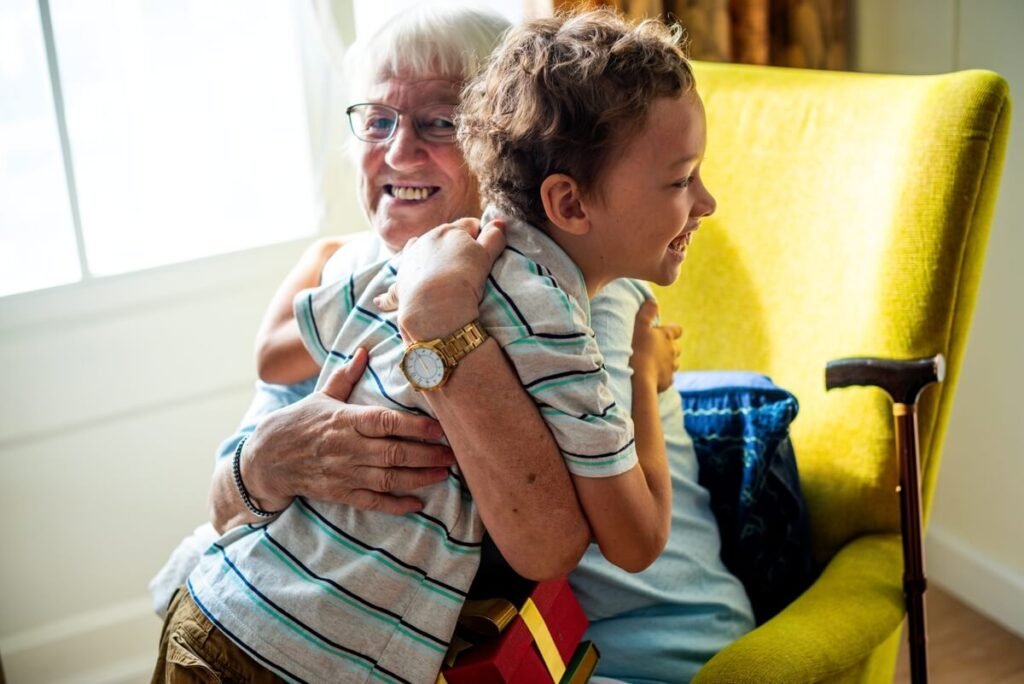
An Especially Hurtful Moment: Mary’s Story
Mary had always had a reputation for being mentally sharp. A retired schoolteacher with a love for crossword puzzles, she prided herself on remembering wedding anniversaries, Bible verses, and the names of every neighbor on her street.
As she and her daughter were leaving their local grocery store one afternoon, Mary stopped in her tracks. She couldn’t remember where she’d parked her car. Her daughter laughed gently and said, “Mom, looks like someone had a senior moment!”
Mary smiled, but the comment stung. She knew her daughter didn’t mean to offend her, but it made her feel like her years of wisdom didn’t count anymore. That one moment of forgetfulness didn’t define her, but the label felt heavy.
For many older adults like Mary, stereotypes like “senior moments” can be deeply hurtful. They reduce a lifetime of experience to a joke. And for caregivers, these moments can add stress and sadness too.
In this post, we’ll explore how these stereotypes affect both caregivers and loved ones, and how we can all flip the script on aging.
A Month To Help Make a Difference
I’ll admit it. Earlier in my life, during moments of self-deprecation, I sometimes played the “senior moment” card if I experienced an embarrassing memory lapse in public.
I didn’t have a clue about what damage that flippant comment could do. But I can still make amends.
May is Older Americans Month, a time to honor and celebrate the lives and wisdom of our older loved ones. This year’s theme, “Flip the Script on Aging,” invites us to rethink the way we view aging. Instead of seeing it as decline, we can see it as a time of growth, strength and purpose.
But if you’re a family caregiver, you’ve likely felt how harmful age-based stereotypes can be. They don’t just affect your loved one. They affect you, too. These false ideas about aging can lead to shame, stress and misunderstanding on both sides of the caregiving relationship.
Let’s explore five common stereotypes about the elderly, why they’re harmful, and what you can do to challenge them with love and truth.
How Stereotypes Add to Caregiver Stress
Caring for an aging parent or spouse is deeply emotional. And when the world sees your loved one as “helpless” or “outdated,” it can create another layer of pressure for everyone involved.
Stereotypes can contribute to patronizing communication practices like “elderspeak.”
You may feel like you’re constantly explaining or defending your loved one’s choices or abilities. You might even question your own decisions or feel invisible as a caregiver. These feelings can build up and lead to caregiver burnout, anxiety or guilt.
By challenging stereotypes, you not only affirm your loved one’s dignity, but you also lighten your own emotional load.
5 Common Stereotypes About the Elderly (and Why They’re Wrong)
1. “Older people are forgetful and confused.”
Memory changes often happen over time, but that doesn’t mean all older adults are losing their minds. Many stay mentally sharp, curious and engaged well into their later years.
2. “They can’t learn new things.”
That just isn’t true. Older adults can and do learn new technology, hobbies, and ideas. They may learn at a different pace, but the desire and ability are still there.

3. “They’re fragile and sick all the time.”
It’s true that aging brings physical changes, but many older adults remain active and independent. Some walk or exercise daily, volunteer or serve as caregivers for others.
4. “They’re a burden on society and their families.”
This is one of the most harmful stereotypes. Older adults give back in countless ways — emotionally, spiritually and practically. They matter.
5. “They don’t want to be social or active.”
Aging can be lonely, but that doesn’t mean older people want to be isolated. Most want connection, purpose and joy just like anyone else.

Why It’s Important to Flip the Script
When we reject ageist ideas, we make room for joy, strength, and shared humanity. It helps caregivers care with more compassion and less frustration.
Seeing your loved one as a whole person and not just a list of health issues can change how you speak, plan and connect. It can also make caregiving feel more meaningful instead of overwhelming.
Challenging stereotypes also helps build a more caring, inclusive community for everyone, especially those who are aging or providing care.
Small Ways Caregivers Can Help Challenge Age Stereotypes
Caregivers are on the front lines of fighting ageism. Here are some ways to gently flip the script in everyday life:
1. Celebrate your loved one’s strengths and accomplishments.
Talk about what they can do, not just what they’ve lost. Share stories of times they’ve made you laugh, taught you something or shown resilience.
Discover 10 fun and simple ways to celebrate older people.
2. Speak up when you hear ageist remarks.
It’s okay to kindly correct misinformation or jokes that put down older people. You might say, “Actually, my mom is 70 years old and she just learned to use Zoom. She’s amazing!” or “Age doesn’t mean someone can’t still grow.”
Learn more about challenging ageism and age discrimination.
3. Encourage independence and choice.
Let your loved one make decisions when possible. Whether it’s what they wear, eat or how they spend their time, their voice matters.

4. Include them in conversations.
Talk with your loved one, not just about them, especially in medical settings or family gatherings. It shows respect and boosts their self-worth.

5. Look for inclusive spaces.
Find places of worship, community centers or senior programs that honor aging and make space for all generations. These positive environments help your loved one feel seen and valued.
6. Share their stories.
Post a photo, write a social media caption or tell a friend something beautiful about your loved one’s life. Remind others that aging is full of meaning and light.
7. Model hope and compassion.
The way you talk about aging, even in your own life, can influence how others view it. Try replacing fear with faith, and frustration with favor.
Supporting Yourself While Supporting Them

Caregiving is sacred work. But it can also be draining, especially when you’re constantly navigating both care tasks and cultural myths about aging.
Giving yourself permission to see the full person behind the diagnosis can lift your spirit. It allows you to enjoy the uplifting moments in between the hard ones.
You don’t have to do it all perfectly. You just have to keep showing up with love, honesty and care.
Let us know in the comments how you’re challenging age-related stereotypes in your caregiving journey.
Aging Stereotypes FAQ
1. How do age stereotypes affect caregivers?
Stereotypes can increase guilt, stress, and pressure to meet unrealistic expectations for those they care for.
2. What’s a healthy way to talk to older adults?
Speak respectfully, use a normal tone and include them in decisions.
3. Can older adults really learn new skills?
Yes. Many continue learning and growing well into their later years.
4. Why do people believe these stereotypes?
Media, culture and lack of exposure to older adults can shape these false ideas.
5. What’s one easy way to fight ageism?
Share positive stories about aging and older adults in your life.






